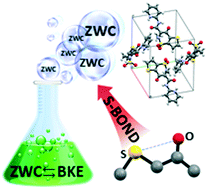Abstract
A non-steroidal anti-inflammatory drug, 4-hydroxy-2-methyl-N-2-pyridyl-2H-thieno(2,3-e)-1,2-thiazine-3-carboxamide 1,1-dioxide, called tenoxicam (TXM), with important implications in cancer treatment, has a peculiarity with respect to other molecules from the oxicam family. TXM is predominantly found in the zwitterionic form (ZWC) within the crystal structures of pure compounds and their solvates; however, it can be present in the β-keto–enolic form (BKE) or β-diketone (BDK) form. To understand this phenomenon, the combined effects of environment (solvent) and intra-molecular non-covalent interactions on the TXM keto–enol tautomerization were investigated through a combined experimental and computational study. We found that the polarity of a solvent had a minor influence on the crystallization process; this allowed to us synthesize and solve six new solvates with TXM in the ZWC form. Careful investigation of the non-covalent interactions between the sulphur atom of thiophenyl moiety and oxygen of the carbonyl group (S-bond) through a computational approach with the natural bond orbital (NBO) theory has shown that TXM crystallization is modulated by the S-bond. This study further confirms the importance of the S-bond in the drug design; however, nowadays, it is still underestimated.



 Please wait while we load your content...
Please wait while we load your content...